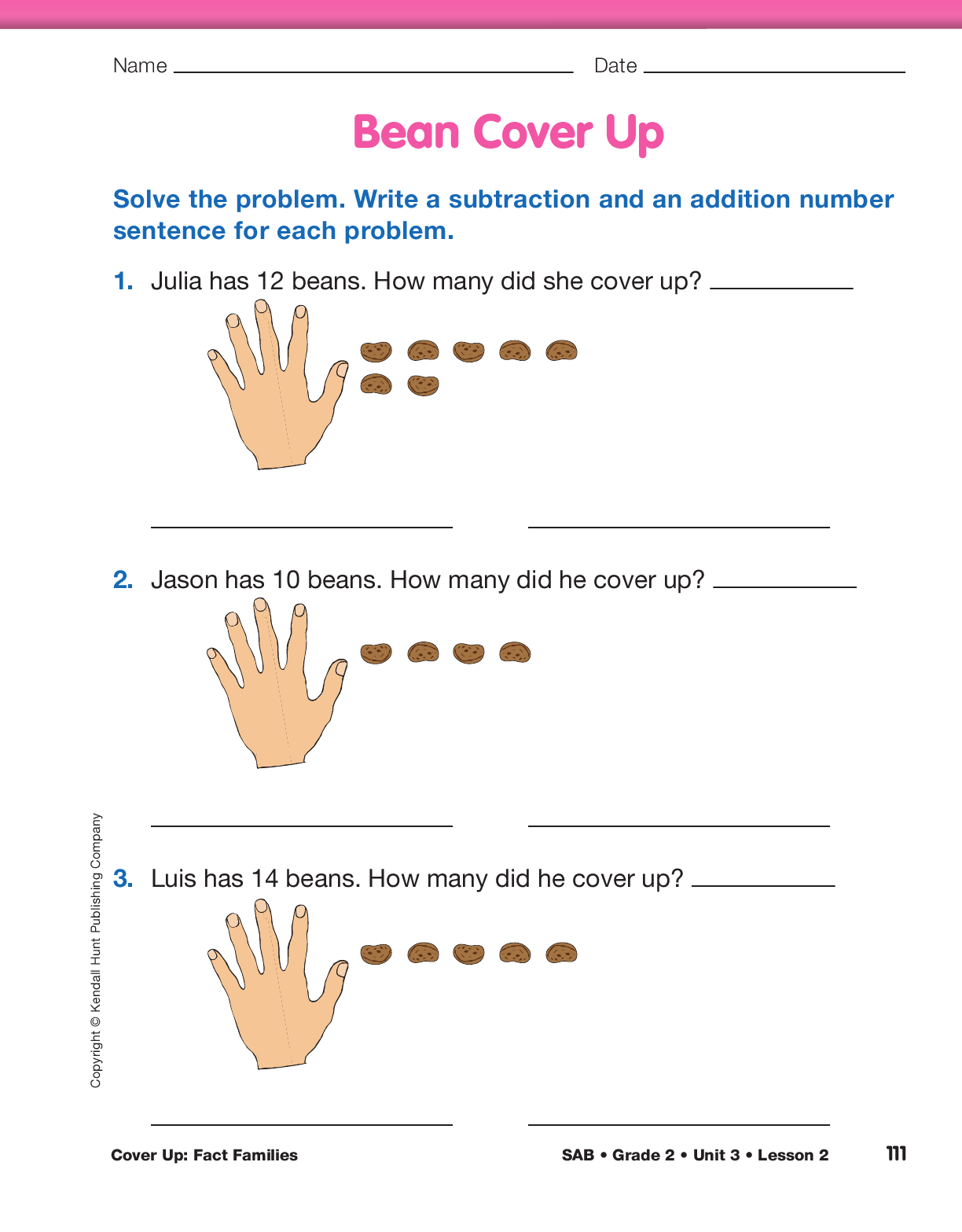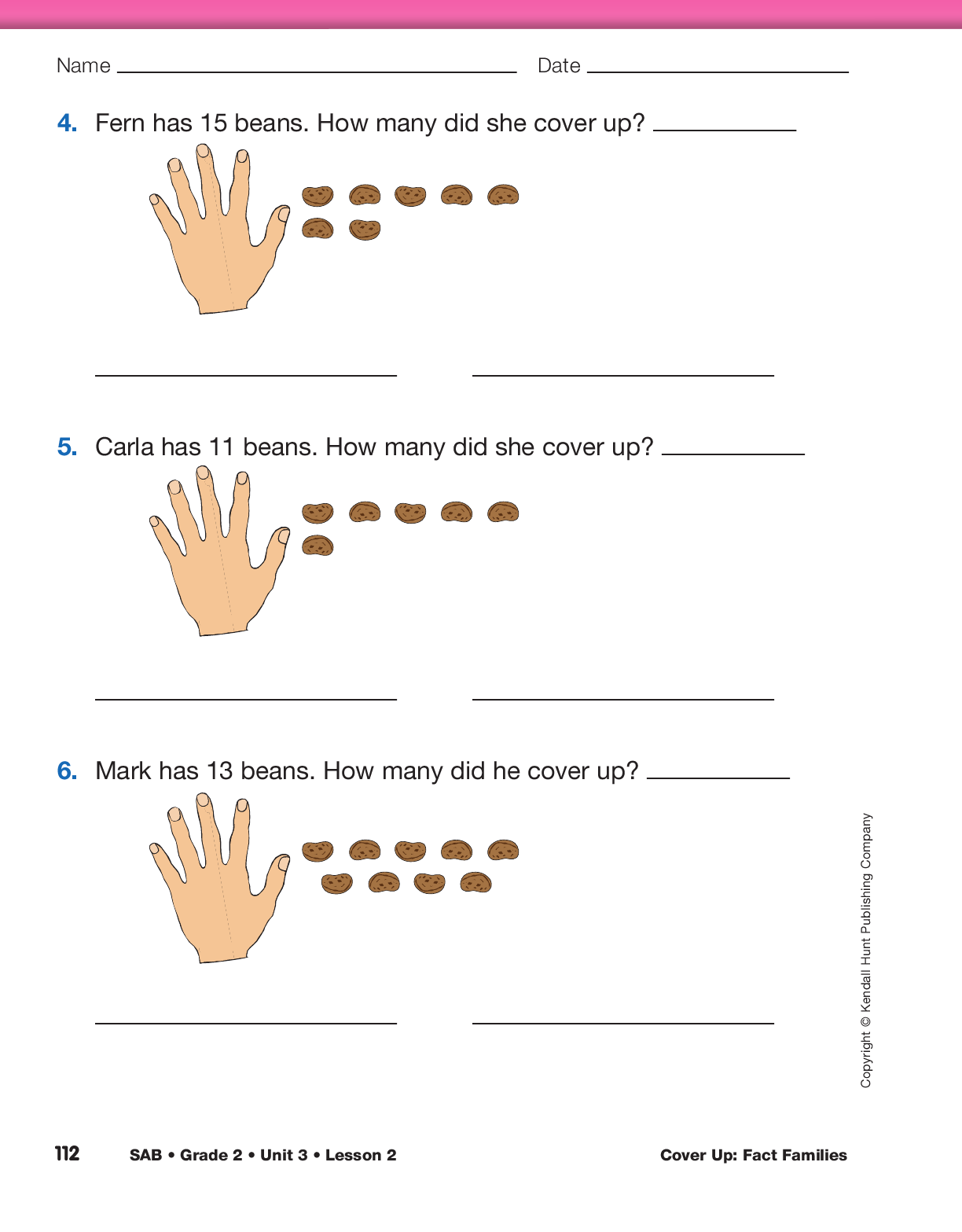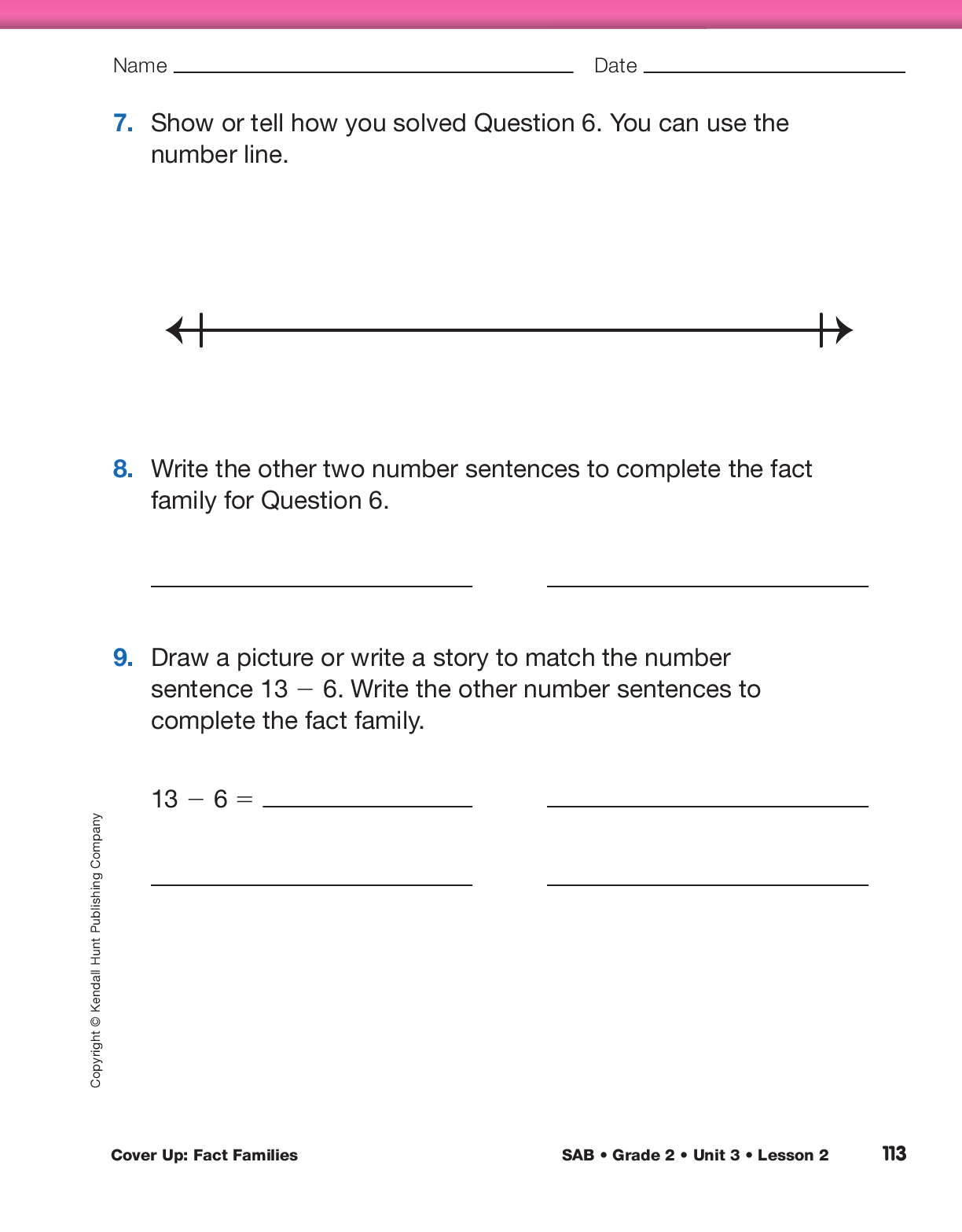Cover Up: Fact Families
Est. Class Sessions: 1Summarizing the Lesson
After adequate game play, ask students to share number sentences and solution strategies. Try to elicit various strategies such as counting-up, counting-back, and using reasoning strategies. Select a pair of number sentences and challenge students to think of the remaining number sentences in the fact family. List each fact family on a display.
Next ask students to solve the following problem with a partner:
When students are finished, ask them to describe their solution strategies and share their number sentences. Discuss why problems such as this have only two possible number sentences in the fact family. Then assign the Bean Cover Up pages in the Student Activity Book.
















